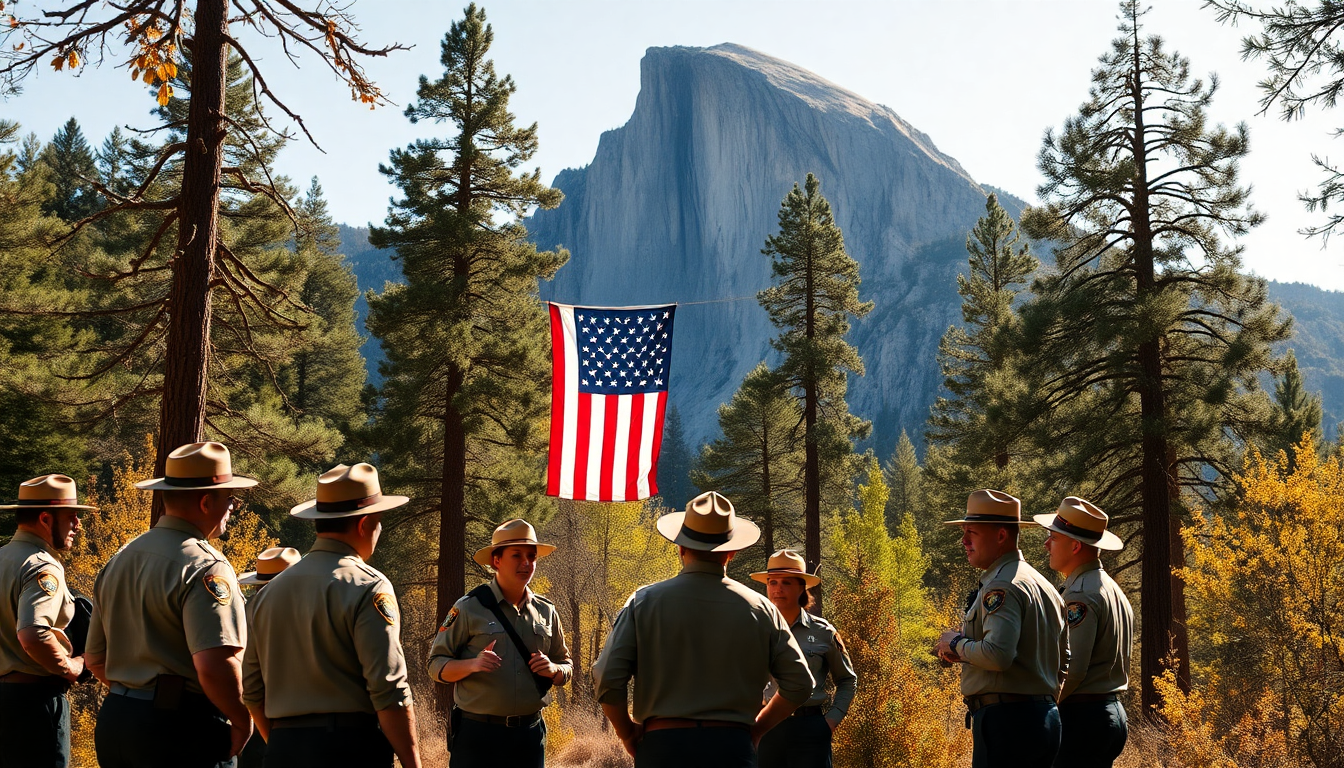Table of Contents
Recent events at Yosemite National Park have ignited a firestorm of controversy, shining a light on the delicate balance between personal expression, employment rights, and park regulations. So, what exactly happened? Let’s dive into the protests by park staff, the changes that followed, and what it all means for the LGBTQ+ community and park management.
Background of the Protests
In a striking act of protest, staff members at Yosemite National Park recently hung the U.S. flag upside down, a traditional sign of distress. This bold move aimed to draw attention to layoffs implemented by the Trump administration, resonating deeply with both park visitors and national media alike. It was a powerful expression of their frustration over sudden job losses and the lack of support from the National Park Service.
These layoffs impacted around 1,000 newly hired employees, leaving many feeling like their dedication to protecting our national treasures was being undermined. The upside-down flag became a symbol of their struggles, transforming the park’s stunning scenery into a stage for political expression—a rare and poignant moment in a place typically celebrated for its natural beauty.
The Controversy Surrounding the Transgender Pride Flag
As if that weren’t enough, the situation took an even more personal turn when Shannon “SJ” Joslin, a ranger at Yosemite and a proud member of the LGBTQ+ community, was terminated after displaying a transgender pride flag across the iconic El Capitan rock formation. Identifying as non-binary, Joslin argued that their dismissal was not only unjust but also a violation of their First Amendment rights. This incident has sparked a broader conversation about the limits of personal expression for federal employees and how park officials can regulate such expressions.
Joslin maintained that the flag was displayed during their off-duty hours as a personal initiative to foster community solidarity. However, a new park directive now restricts the display of flags and banners without a permit, raising concerns that this could stifle free speech and silence the voices of marginalized groups within the park. Is this really the kind of environment we want in such a cherished public space?
Park Policies and Their Implications
The National Park Service has responded to these demonstrations with a multi-faceted approach. Spokesperson Rachel Pawlitz emphasized the need to protect park resources and maintain a positive visitor experience, hinting that administrative actions may be taken against both staff and visitors involved in the protests. This raises a pivotal question: how do we balance enforcing regulations with protecting individual rights, especially in a place known for its natural significance?
Shortly after Joslin’s demonstration, a directive banning large flags and banners was enacted, suggesting a quick reaction from park management aimed at preventing further unrest. But what could this mean for future expressions of identity and protest on federal lands? These policies may discourage similar demonstrations going forward, potentially limiting the voices of those who wish to express their identities.
Conclusion and Future Considerations
The unfolding events at Yosemite National Park reflect broader societal debates about free expression, employment rights, and the role of public spaces in fostering discourse. As the park navigates these complex issues, it’s vital for all stakeholders—staff, management, visitors, and advocacy groups—to engage in open dialogue about inclusivity and the protection of individual rights within the park’s boundaries. Looking ahead, the outcomes of these incidents could set important precedents for how national parks across the country manage similar situations, underscoring the need for thoughtful policies that respect both the natural environment and the diverse communities that cherish it.


